Kuri Kinton is a delightful sweet dish commonly enjoyed during New Year's celebrations in Japan. Its vibrant yellow adds a touch of brilliance and elegance to the meal, enhancing the celebratory atmosphere.
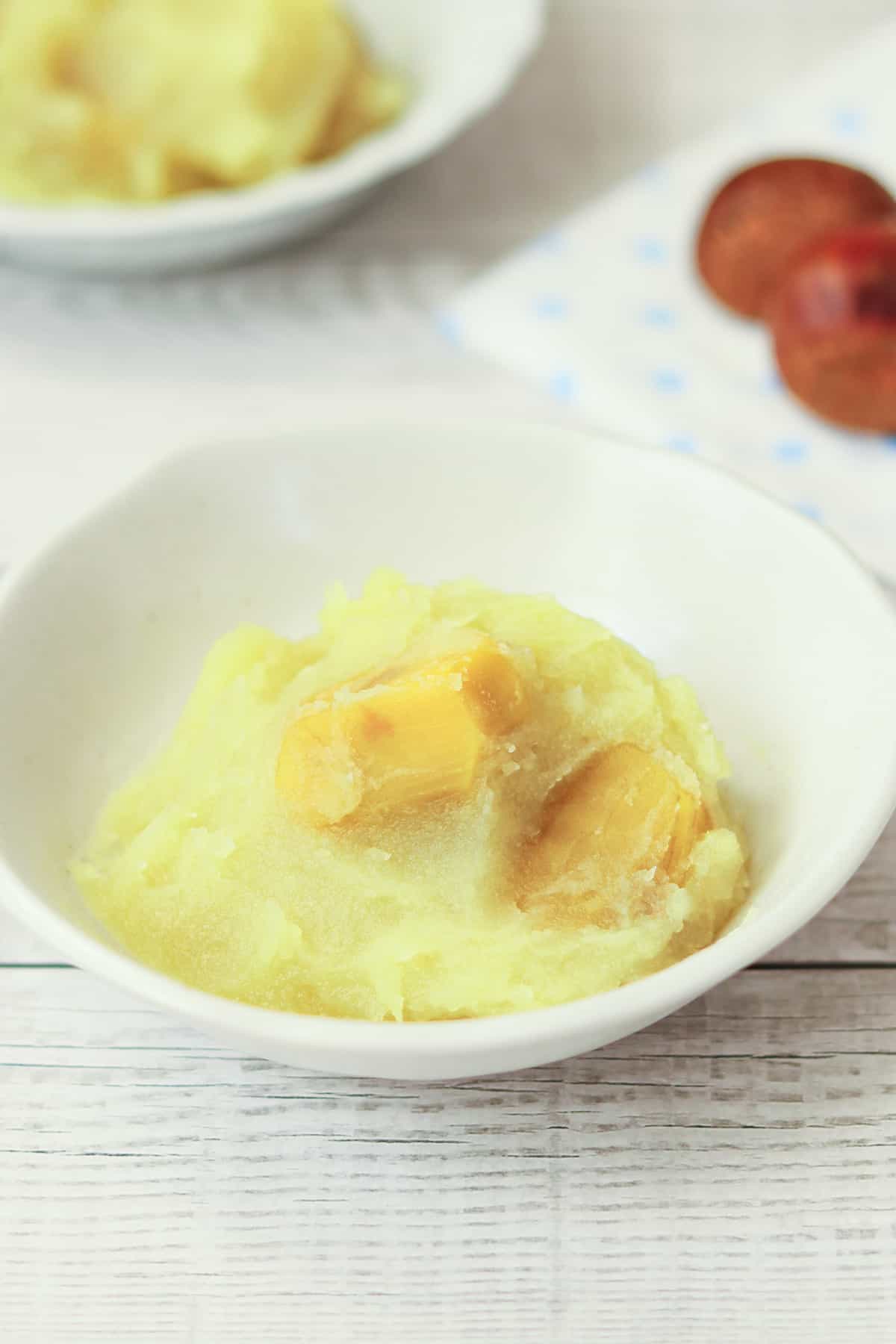
Jump to:
What is Kuri Kinton?
Kuri Kinton is a sweet Japanese dish consisting of kuri no kanroni (chestnuts simmered in sugar syrup) combined with Japanese sweet potato paste. "Kuri" means chestnuts, and "Kinton" refers to golden-colored dumplings. Due to its shape, this dish is so named, and the beautiful golden color is believed to bring good luck, making it a popular dish for festive occasions in Japan.
While it is often categorized as a side dish, it is sometimes classified as a treat due to its sweetness. With its satisfying portion, it serves as a perfect choice to curb hunger or cravings for something sweet. You can enjoy it with both your eyes and taste buds.
By the way, there is another treat with the exact same name, mainly consumed in Gifu Prefecture. However, this is a different sweet made with chestnuts and sugar.
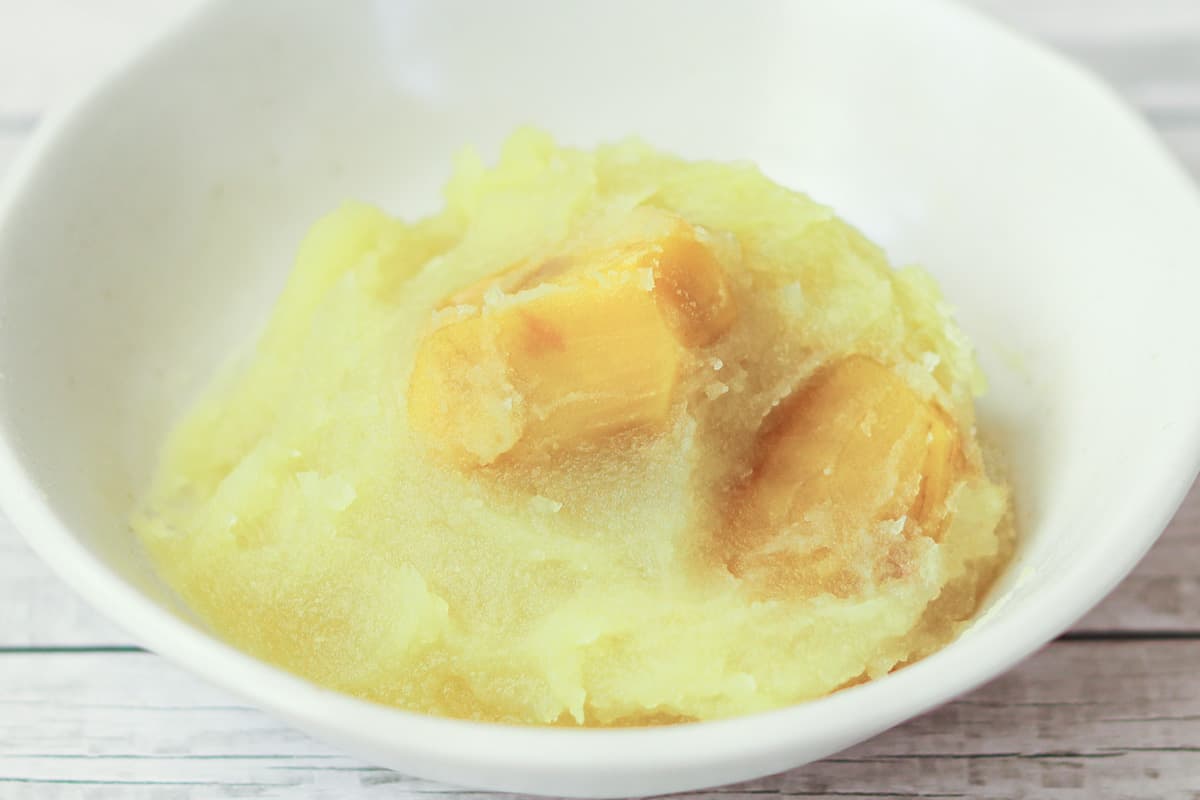
The source of bright yellow
Japanese sweet potatoes have a yellowish color, but achieving the vibrant yellow of kuri kinton is not possible with sweet potatoes alone. To attain this color, gardenia pods are required. Gardenia pods act as a natural dye for coloring, and when simmered with Japanese sweet potatoes, they turn the sweet potatoes a brilliant yellow.
However, there is also an opinion in Japan that dyeing the sweet potatoes a bright yellow is unnecessary, as kuri no kanroni, a primary ingredient in this dish, already has a golden color. While this recipe includes a gardenia pod, its usage is optional. Regardless of your choice, the flavor remains completely unchanged.
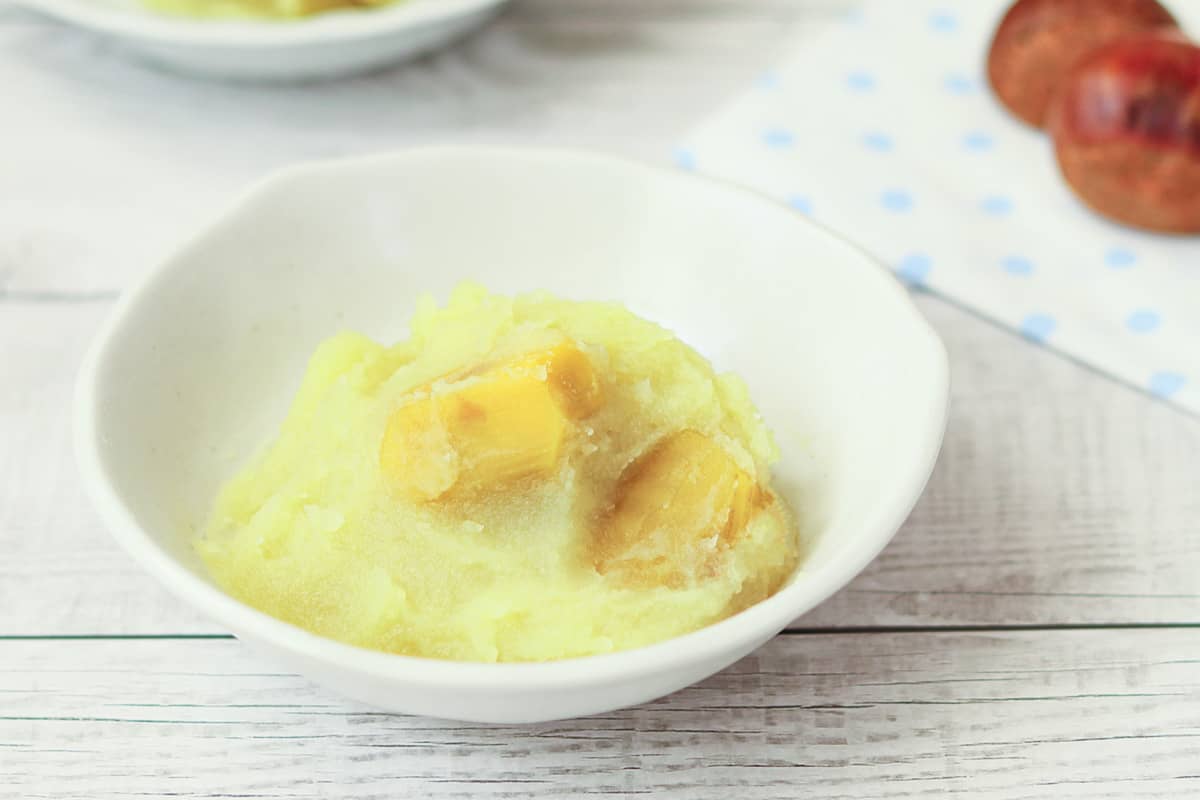
Ingredients
- 1 Japanese sweet potato
- 1 dried gardenia pod (optional)
- ¼ cup sugar
- 6 kuri no kanroni (chestnuts simmered in sugar syrup)
Seasonings:
- 1 ½ Tbsp syrup from kuri no kanroni
- 1 ½ Tbsp mirin
- pinch of salt
Step-by-step instructions
🕒 Total 45 mins
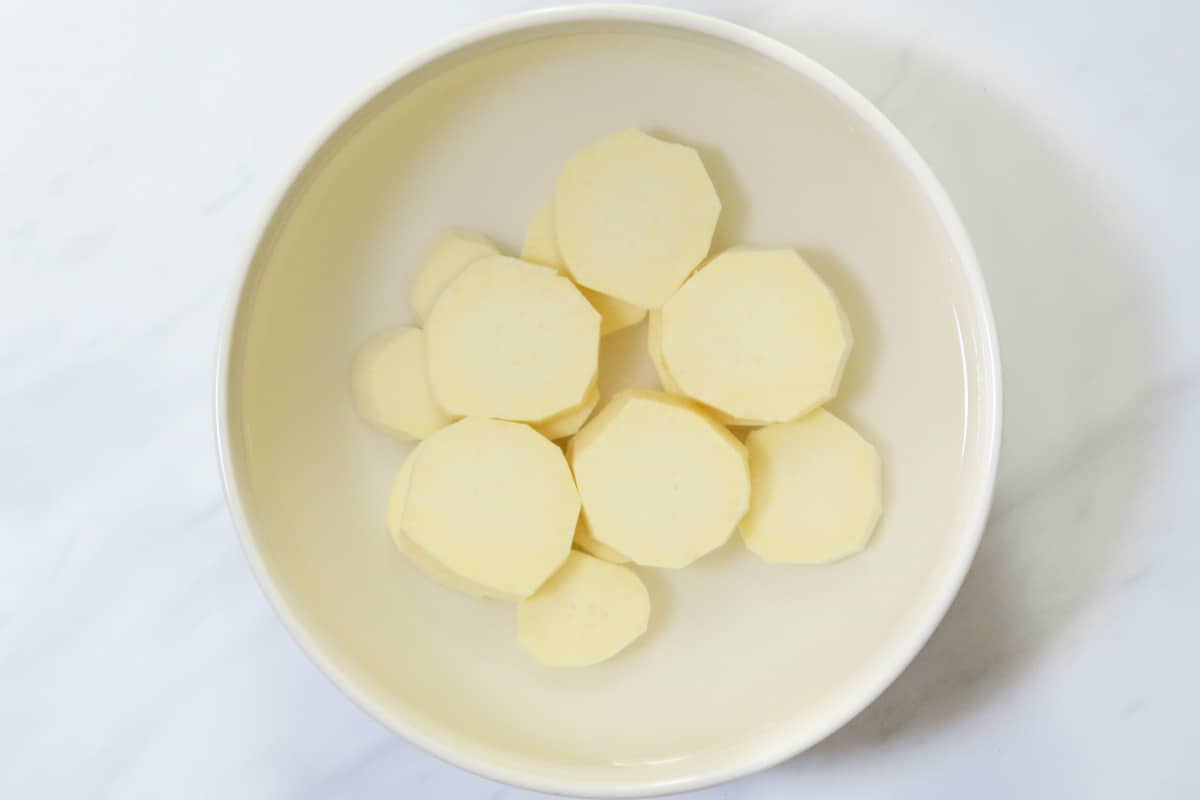
Step 1
Trim both ends of the sweet potato, then slice it into 0.8 inch (2cm) rounds, and then peel each piece thickly. Place the sweet potato slices in a bowl of water and let them soak for 10 minutes to remove the starch content.
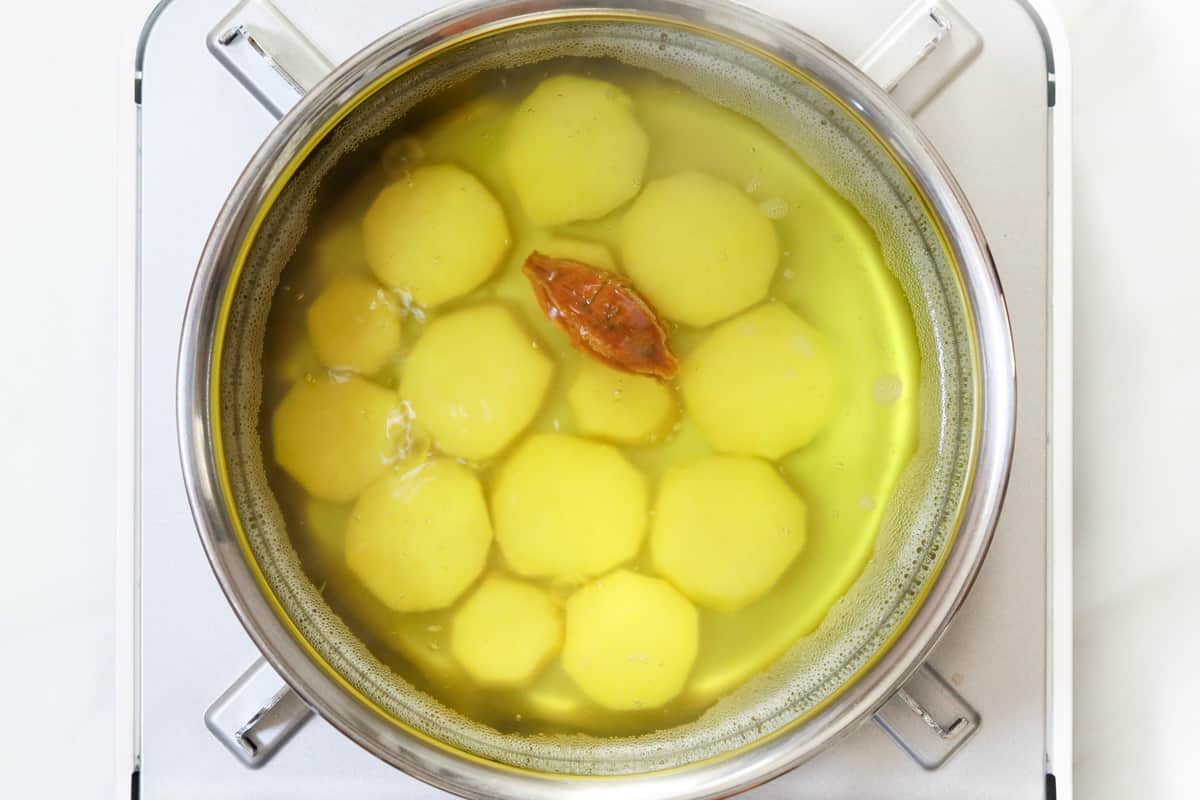
Step 2
Crack the gardenia pod using a knife handle or pliers. Put the sweet potato slices and cracked gardenia pod in a pot, and add enough water (separate from step 1) to cover the sweet potato. Bring it to a boil, and let it simmer over low heat for 15 minutes.
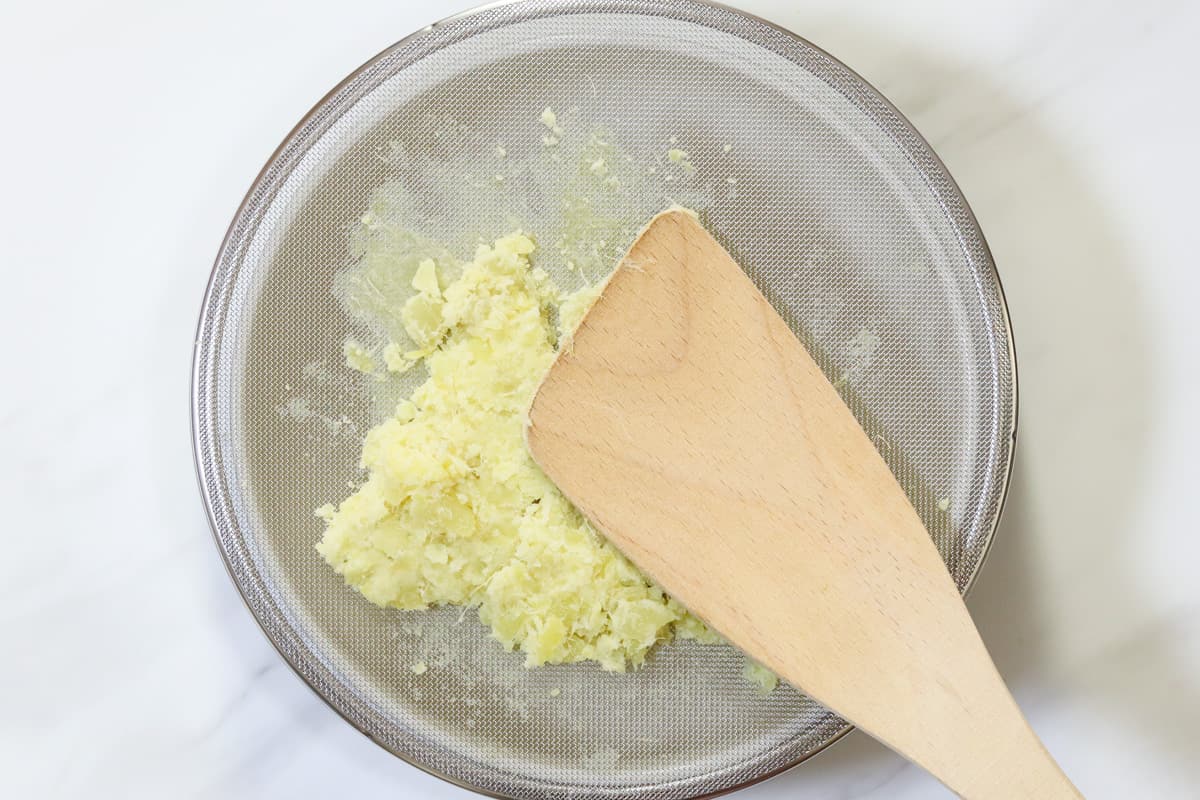
Step 3
Strain the contents of the pot through a colander and remove the sweet potatoes. Puree the sweet potatoes using a fine-mesh strainer along with a spatula (or use a blender).
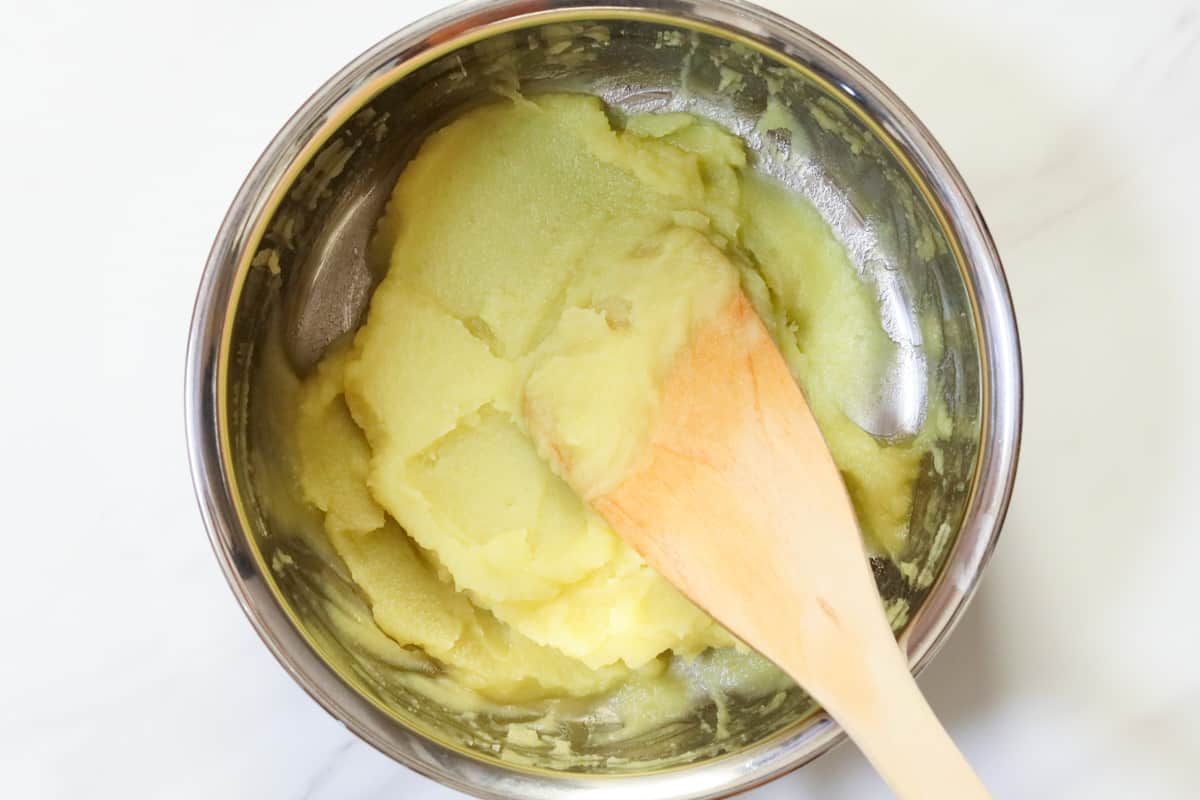
Step 4
Put the pureed sweet potatoes and sugar into a pot and cook over low heat while stirring with a spatula. Once mixed well, add the seasonings (syrup from kuri no kanroni, mirin, and salt) and continue stirring.
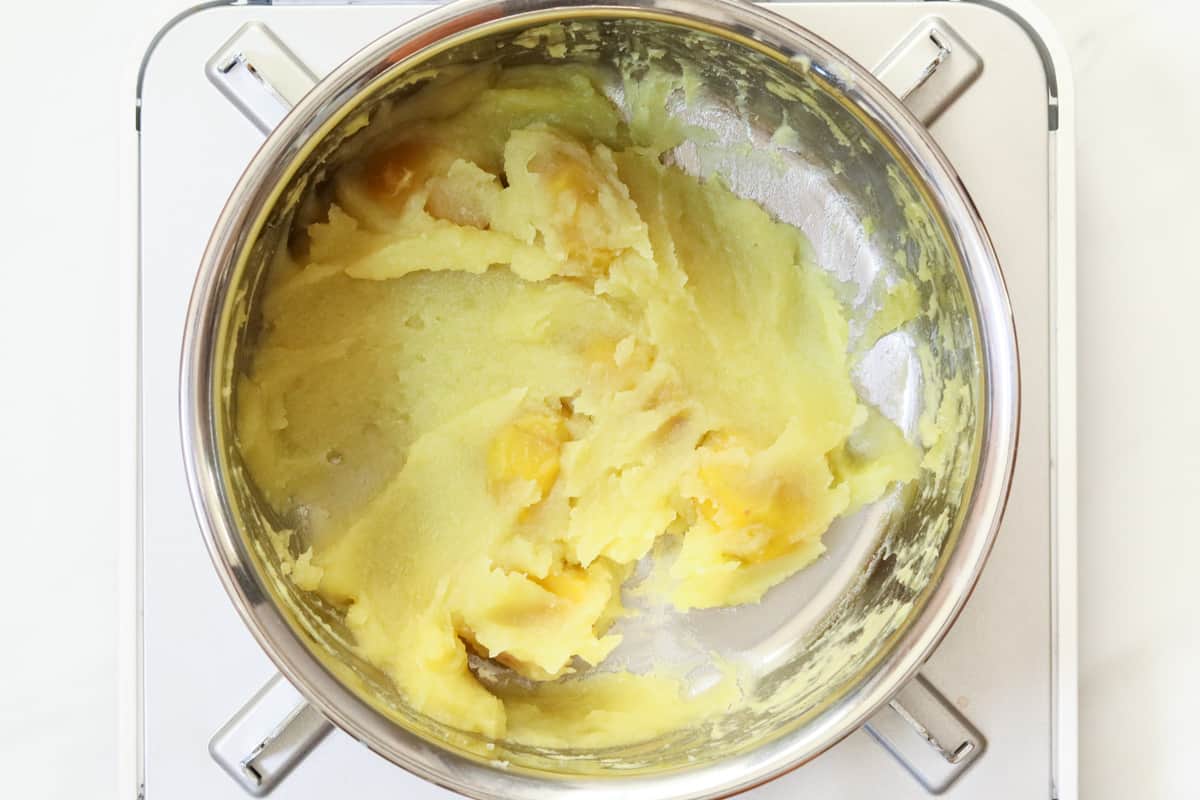
Step 5
After the mixture becomes a smooth paste, add the kuri no kanroni. Cook for a few minutes until the kuri no kanroni is heated.
To Store
You can store it in the refrigerator for up to 4 days.
Tips on how to make
- Peel the sweet potatoes thickly. Thoroughly removing the fibers between the skin and flesh will result in a smoother texture for the dish.
- Puree the sweet potatoes. This process is crucial because it also gives the dish a smoother texture.
Recipe Card

Kuri Kinton (Mashed Sweet Potatoes with Candied Chestnuts)
Ingredients
- 1 Japanese sweet potato
- 1 dried gardenia pod (optional)
- ¼ cup sugar
- 6 kuri no kanroni (chestnuts simmered in sugar syrup)
Seasonings:
- 1 ½ Tbsp syrup from kuri no kanroni
- 1 ½ Tbsp mirin
- pinch of salt
Instructions
- Trim both ends of the sweet potato, then slice it into 0.8 inch (2cm) rounds, and then peel each piece thickly. Place the sweet potato slices in a bowl of water and let them soak for 10 minutes to remove the starch content.
- Crack the gardenia pod using a knife handle or pliers. Put the sweet potato slices and cracked gardenia pod in a pot, and add enough water (separate from step 1) to cover the sweet potato. Bring it to a boil, and let it simmer over low heat for 15 minutes.
- Strain the contents of the pot through a colander and remove the sweet potatoes. Puree the sweet potatoes using a fine-mesh strainer along with a spatula (or use a blender).
- Put the pureed sweet potatoes and sugar into a pot and cook over low heat while stirring with a spatula. Once mixed well, add the seasonings (syrup from kuri no kanroni, mirin, and salt) and continue stirring.
- After the mixture becomes a smooth paste, add the kuri no kanroni. Cook for a few minutes until the kuri no kanroni is heated.
Notes
- You can store it in the refrigerator for up to 4 days.

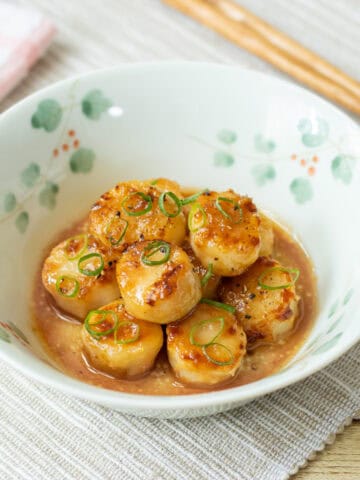
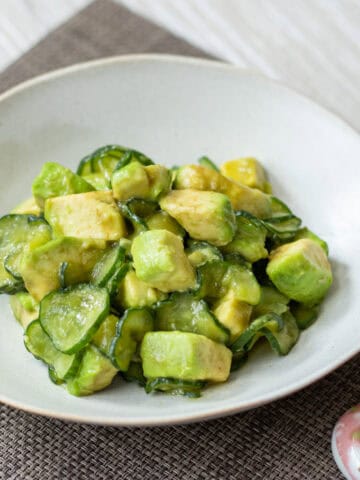


Leave a Reply